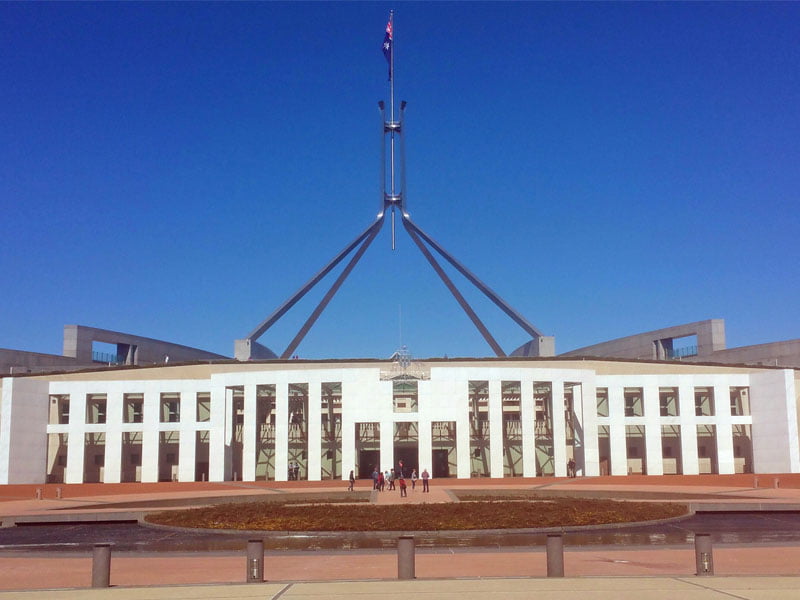For the hard-working staff at NBN Co, the nonsense being spruiked by CEO Bill Morrow must be hard to swallow. For the rest of Australia, Mr Morrow’s comments are a sign that the wheels have fallen off and there is an urgent need for the company to change direction and management team.
With just over three years to complete about 60 per cent of the National Broadband Network (NBN), NBN Co is coming under increasing pressure due to the poor performance of the Fibre-to-the-Node (FTTN), a lack of distribution and transit capacity in some areas resulting in daily congestion, and an increasingly complex business model.
Supporters of the Prime Minister Malcolm Turnbull’s NBN lemon continue to argue that it would have taken 10 years longer to complete if a full fibre network was deployed and it would have cost about $90 billion.

As we’ve seen in the past week however, this nonsense has been surpassed by NBN Co CEO Bill Morrow’s offensive statements that Australians are technology luddites and would not want gigabit NBN connections “even if we offered it for free”.
Mr Morrow put his foot in it when he attempted to defend NBN Co’s failed business model at the recent NBN Co half-yearly financial results presentation
In response to a question from a News Corporation journalist, Mr Morrow starting digging a hole and did not know when to stop.
“All of these other things could certainly drive up more of that consumer need, but we haven’t seen that as of yet, because those aren’t really here to where people feel I need to pay extra money to get that kind of service. Even if we offered it for free, we see the evidence around the world that they wouldn’t use it anyway.”
The statement by Mr Morrow that the financial results were “impressive” is incorrect,t and ignores the underlying value proposition for future financial investors. After the Government has committed $50 billion to the NBN, NBN Co could be worth as little as $10 billion according to The Australian’s Business Editor-at-Large Alan Kohler.
NBN Co is rolling out obsolete FTTN technology, paying Telstra $1 billion a year to rent infrastructure for the next 35 years, and failing to provide access to the NBN at speeds and prices consistent with international experience.
NBN Co’s connection and data usage charges are too high, and this has been the focus of concerted criticism by industry in the past week.
Under the original NBN design, the rollout of a ubiquitous fibre network would permit NBN Co to reduce the connection and data usage charges at a consistent rate throughout the rollout, and NBN Co would still be able to meet the financial targets.
An all-fibre network would permit Australian consumers to connect to the NBN at 1000/400 Mbps for about $140 per month with unlimited downloads based on Spark New Zealand’s current pricing.
About 80 per cent of new connections to New Zealand’s fibre broadband network is at 100/40 Mbps with unlimited data at a cost of between $80 and $100 per month.
The problem for NBN Co is straight forward. Even if the price of gigabit connections was charged at a rate comparable to New Zealand, less than 40 per cent of NBN customers would be able to take advantage of the gigabit connection speeds by the end of the rollout.
This means is the other 60 per cent will potenitally be quite hostile to the Turnbull Government at the next election. So it appears the goal for NBN Co is to ensure the majority of customers remain on low connections speed plans by making the higher speeds unaffordable.
NBN Co has constantly tried to play down this disparity by ‘talking up’ the potential for upgrades to the network, whilst failing to mention that the cost of future upgrades reduces the value of the NBN, increases costs to consumers and is likely to result in delays access to gigabit connection speeds by a decade or more for about 60 per cent of consumers.
Australia is now falling behind our competitors in the global digital economy at an increasing rate and the failed NBN plan is making the problem worse.
The Australian telecommunications industry has been lining up in the past week to criticise the Government’s handling of the NBN.
Calls for the government to write down the value of the NBN by as much as $20 billion have been made by the industry and the Competitive Carriers Coalition issued a statement calling for change.
“The real problem was that the NBN pricing model – designed to satisfy the Government’s demand
for a ‘return on investment’ – is unsustainable, self-defeating and was creating a vicious cycle that ultimately could undermine the viability of the NBN.”
“It doesn’t matter how much NBN spends on marketing, if selling higher speeds services will send retailers broke, they simply can’t and won’t do it,” a CCC spokesman said.
In a statement on NBN Co’s business model reported in The Australian on 1 February, Telstra stated that “given the correlation between low usage and low income, we consider that NBN pricing will negatively impact on affordability.”
After the release of a pricing model tweak last week by NBN Co, Telstra regulatory affairs executive director Jane van Beelen told The New Daily, “we are disappointed that NBN Co has not addressed concerns we raised previously about the impact of a retail service provider (RSP) based pricing approach on low-use and voice-only customers.”
“The RSP pricing structure means service providers with lower use and voice-only customers will pay a higher price to NBN for all their customers on the NBN.
“Telstra remains concerned these customers will end up with less choice, higher prices, or be forced to look for lower-cost substitutes for voice and broadband, away from the NBN.”
It is reasonable to argue that the volume of industry criticism in the past week echoes the concerns of telecommunications experts who have been calling for the government to scrap the FTTN since July 2013 and to reposition the NBN to ensure that consumers can connect at speeds up to 1000/400 Mbps at reasonable cost, whilst still being able to get access to low-cost telephone and broadband.
Communications Minister Mitch Fifield needs to step in and sanction Mr Morrow for his recent spate of statements that are nothing short of ‘alternate facts’ and nonsense. Senator Fifield must be aware that the next two years are not going to get any better as consumers are forced onto the second rate NBN at unacceptably high prices.
How Australia could find itself in this position will be debated for decades to come. And this debate is likely to be ugly for the Coalition who have no one to blame but themselves. We have only to look at New Zealand to see a solution to our current predicament.
If the government writes down the value of the NBN, without addressing the disparity in service offerings and performance caused by the FTTN, the current problem with NBN Co’s business model could become much larger.
This is because the multi-technology mix design is based on an underlying principle – that most Australians will connect at 25/5 or 50/10 Mbps over copper. A change to this design could cause reliability, resiliency and capacity problems in the rest of the network – resulting in an even bigger headache.
It is time for the Senate to put a blow torch to the NBN Co management team to put a stop to the endless namby-pamby statements from Mr Morrow and his cronies.
Mark Gregory is an Associate Professor in the School of Engineering at RMIT University.
Do you know more? Contact James Riley via Email.

